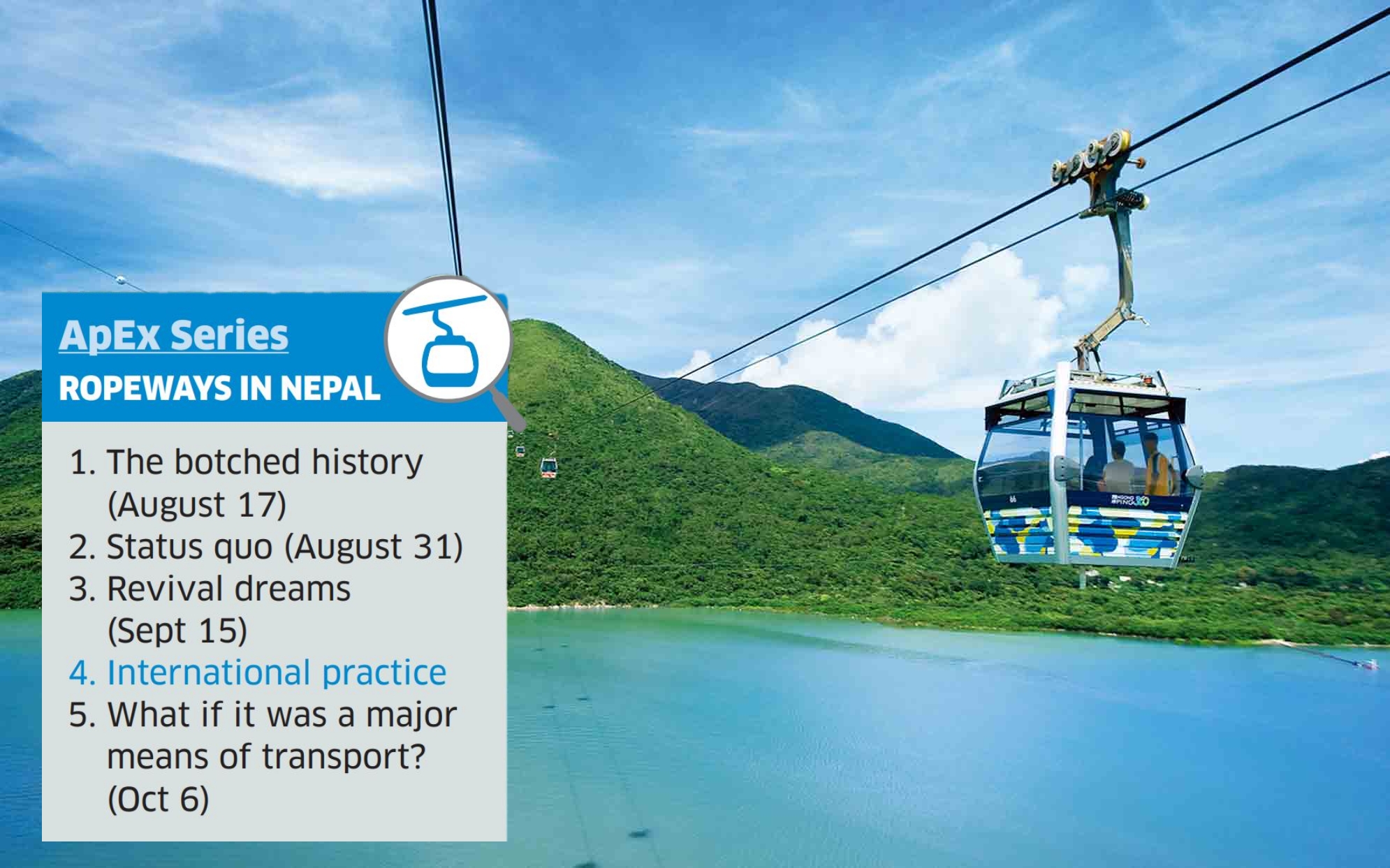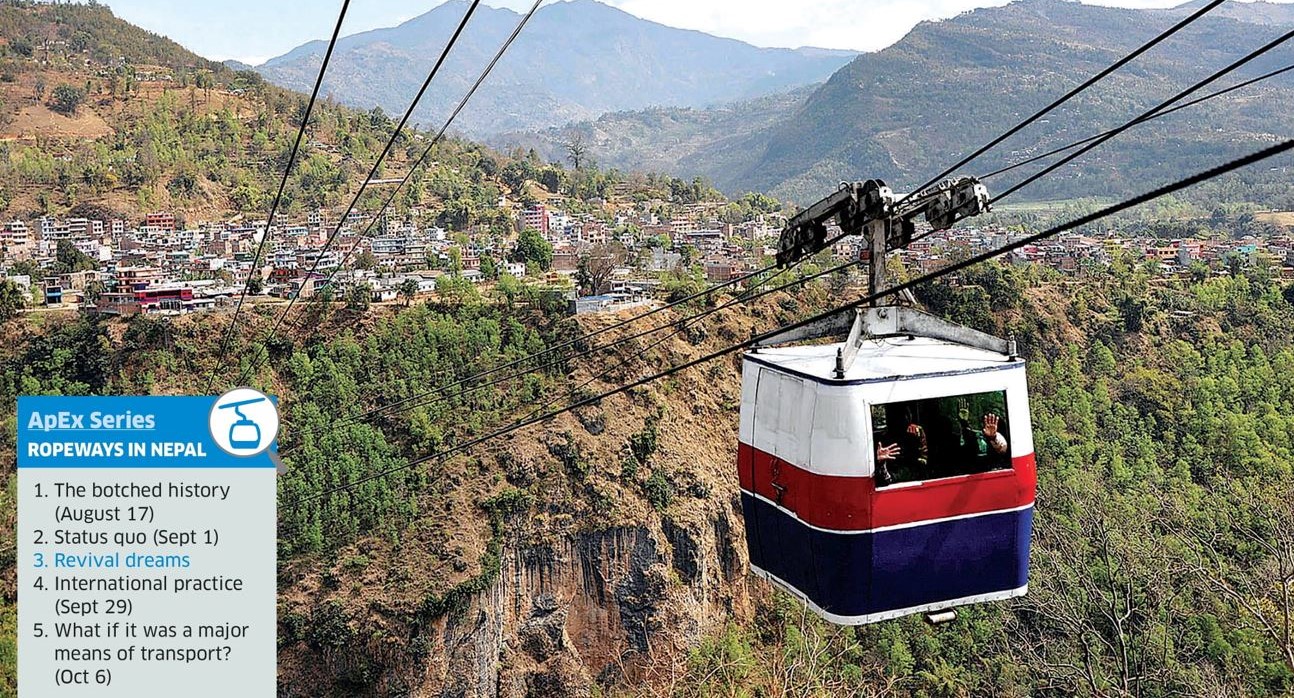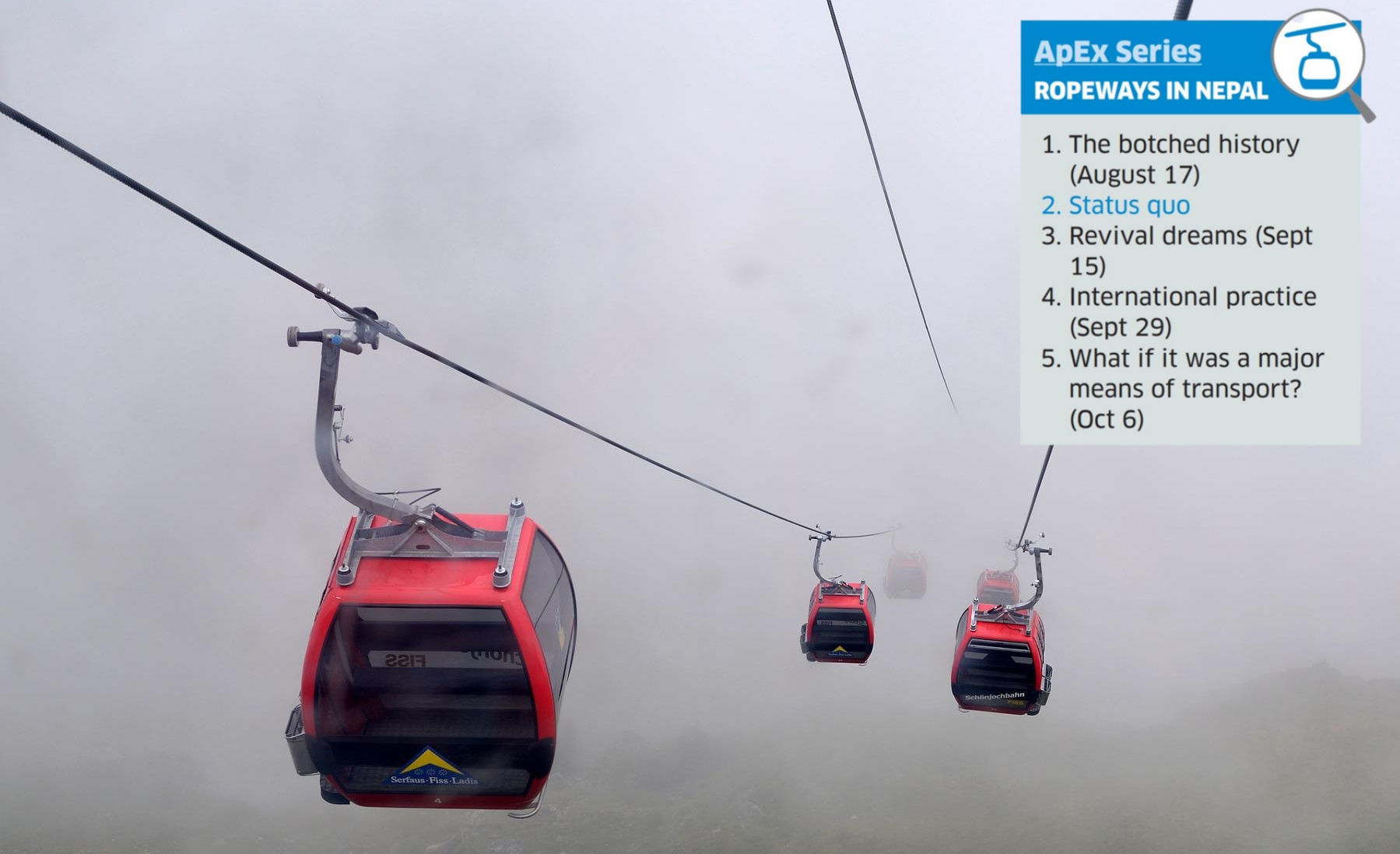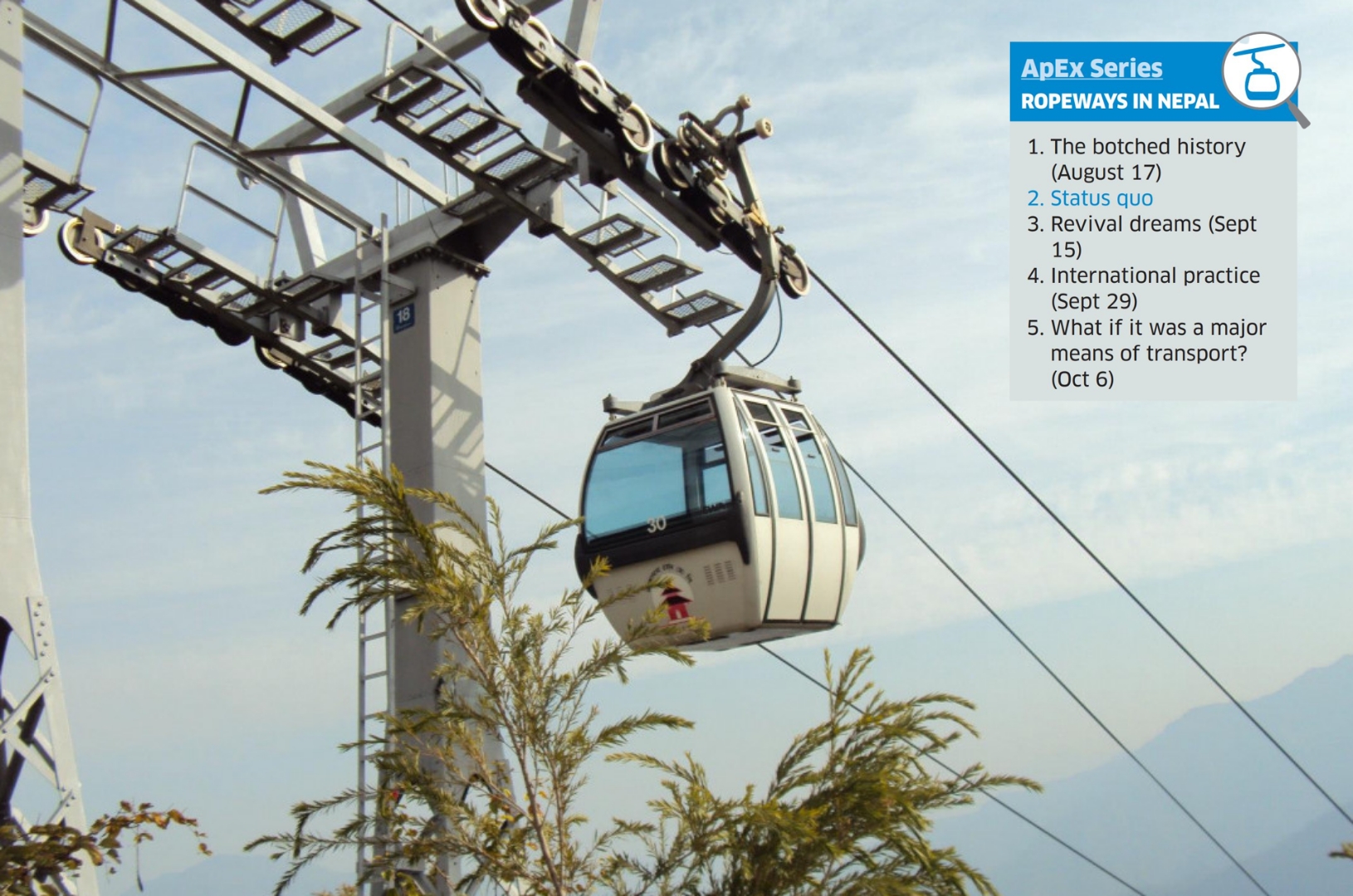Two Himalayan lands
The first conspicuous similarity between Nepal and Bhutan is that both are precariously sandwiched between India and China. Both are largely mountainous. Both were monarchies until recently. (Bhutan is still one.) Nepali is spoken widely in Nepal as well as Bhutan. But there have been more differences than commonalities in recent times.
Nepal has made progress in its relations with China, especially under the current government. Bhutan, on the other hand, has no diplomatic ties with China. Likewise, the influence of western powers is far more widespread in Nepal than in Bhutan. And while Nepal has taken steps to escape from the ‘exclusive sphere’ of Indian influence, Bhutan is still firmly within it. But it is said the 2015-16 Indian blockade on Nepal and the 2017 Doklam incident have made the Bhutanese ruling class, as well as common citizens, more receptive to China; the risks of reliance on a single outside power are apparently too high.
Although Nepal and Bhutan are members of regional initiatives like SAARC, BIMSTEC and BBIN, they do not have embassies in each other’s capitals. The two countries trade little. Tourism is also miniscule: 10,923 Bhutanese came to Nepal in 2017, and it’s a hassle for Nepalis to go to Bhutan. An old thorn in their relations is the Bhutanese refugees. Bhutan refused to take them back; it still declines the repatriation of 6,600 of them who remain in two camps in eastern Nepal.
Ties between Nepal and Bhutan have been contingent on their relations with India, even in the case of the Bhutanese refugees. As the geopolitical competition in South Asia heats up, the two are bound to face similar challenges. They might as well collaborate.
Nepal and Bhutan
Sandwiched between two Asian giants
Nepal and Bhutan have many things in common: both are landlocked Himalayan countries sandwiched between the two Asian powerhouses, India and China. Both are predominantly agricultural countries dependent heavily on India.Additionally, Nepal and Bhutan are members of the United Nations (UN), the Least Developing Countries (LDCs), the South Asian Association for Regional Cooperation (SAARC), the Bay of Bengal Initiative for Multi-Sectoral Technical and Economic Cooperation (BIMSTEC), the Bangladesh, Bhutan, India, Nepal (BBIN) Initiative, and the Non-Aligned Movement (NAM).
India considers both Nepal and Bhutan as falling under its exclusive sphere of influence. Nepal’s case, however, is different as it has started adopting a balanced approach toward India and China, and has been reaping maximum benefits from China’s economic growth. Bhutan, on the other hand, does not have diplomatic relations with China even while it enjoys ‘special relations’ with India.
But public opinion in Bhutan is gradually changing. The Bhutanese seem to have realized that total dependence on India may not always be tenable and that their country should reach out to China. Mainly after the Indian blockade on Nepal in 2015, there are growing voices in Bhutan calling for an end to complete dependence on any one country. China has been offering economic assistance to Bhutan under the Belt and Road Initiative (BRI).
Trade, tourism and transport
Although Nepal and Bhutan established diplomatic relations in 1983, they do not have embassies in each other’s capital. The Nepali and Bhutanese ambassadors in New Delhi are accredited respectively to Thimpu and Kathmandu. High-level exchanges between Nepal and Bhutan are rare. Although Nepal and Bhutan engage in some trade, the prospects of expanding cooperation remain largely unrealized.
Nepal exports to China sculptures and statuary, electric transformers, soaps, garments and footwear. Major imports from Bhutan include gypsum, coal and cement. Even though the balance of trade has traditionally been in Nepal’s favor, Nepal has sustained trade deficit in recent years, according to Nepal’s Ministry of Foreign Affairs. The two countries signed an Air Service Agreement in February 2004, and Druk Air and Bhutan Airlines operate scheduled flights between Paro and Kathmandu. While 5,428 Bhutanese tourists visited Nepal in 2015, as many as 10,923 of them came here in 2017.
In 2005, a Memorandum of Understanding (MoU) was signed between the Federation of Nepalese Chambers of Commerce and Industry (FNCCI) and its Bhutanese counterpart to promote trade and enhance economic relations between the two countries. The first meeting of the Nepal-Bhutan Bilateral Trade at the level of Joint Secretaries of the ministries of commerce was held in Kathmandu on 17 March 2010. The second meeting, held to discuss the draft agreement on bilateral trade, took place in Thimpu on 24-25 May 2011.
Lhotsampa logjam
Summing up Nepal’s relations with Bhutan, an official at the Ministry of Foreign Affairs, who declined to give his name as he was not authorized to speak on the matter, says, “Ties are neither cordial nor strained. In the past three decades, the issue of Bhutanese refugee dominated the bilateral agenda. While Nepal brought up the issue in every bilateral meeting, Bhutan was reluctant to take its citizens back.”
The issue of Bhutanese refugees has been a contentious topic between the two countries. Even after 16 rounds of ministerial-level talks, Bhutan did not agree to repatriate the Lhotsampas (Bhutanese people of Nepali descent), who fled their country three decades ago and lived in seven UNHRC-sponsored camps in eastern Nepal. Since 2007-08, about 113,000 Bhutanese refugees have been resettled in the US and a few other countries under a UN third-country resettlement program.
There are still about 6,600 refugees in two camps in eastern Nepal who have rejected third-country resettlement. While the refugees enjoy limited freedoms, Nepal has refused to integrate them locally and has been asking Bhutan to resolve the issue through talks. Thimpu, on the other hand, has been trying to persuade Kathmandu to integrate the refugees permanently.
“Nepal wishes to solve the Bhutanese refugee problem with all sincerity and expects the same degree of response from Bhutan,” says the official document of Ministry of Foreign Affairs. “Among other things, Nepal has been requesting Bhutan for the revival of the Ministerial Joint Committee for resolving the problem. Nepal holds firm view that the refugees should be repatriated to their homeland at the earliest with dignity and honor.” Nepal also maintains that Bhutan has not demonstrated interest in talking further about the refugee issue.
But Dr. Nishchal N. Pandey, Director at the Center for South Asian Studies, says Nepal and Bhutan need to move beyond the refugee issue, which he thinks has been an obstacle to furthering bilateral ties. “We have many commonalities with Bhutan. There is a dire need to explore opportunities in trade, tourism and investment, including in hydro-power development. More and more students from Nepal and Bhutan are studying in each other's educational institutions,” says Pandey, who wrote his PhD dissertation on Nepal-Bhutan relations.
The right Nepal has given to the Bhutanese airlines to fly to Kathmandu and then to India has helped promote Bhutanese tourism, Pandey points out. “But Bhutan does not give Nepalis easy on-arrival visas the way we do to the Bhutanese,” he says.
On the issue of the Bhutanese refugees, Pandey believes the resettlement in the US and other countries of the bulk of the refugees is a relief for Nepal. “Lately, we can see the resettled Lhotsampas actively offer their views on democracy and human rights on social media,” adds Pandey.
Back to the future
While Nepal is a secular country with a Hindu majority, Bhutan is predominantly a Buddhist nation. The first visit of the king of Bhutan to Nepal took place in 1987. While he was here to participate in the third SAARC summit, he also went on a pilgrimage to Halesi Madhadev in the district of Khotang. Late King Birendra visited Bhutan in 1988 for consultations on SAARC issues. When Nepal was a monarchy, royal members of the two countries frequently visited each other's country.
Following the 2015 earthquake in Nepal, Bhutan contributed $1 million to rehabilitation efforts; Prime Minister Tshering Tobgay travelled to Kathmandu to personally hand over the aid money. A 78-member relief team was also deployed in the aftermath of the quake on the request of the Bhutanese king.
Many are of the view that the two countries should hold more high-level visits. “The Swambhunath is an epitome of our age-old ties. The stupa has been renovated several times in history, and each time the Bhutanese ruler of the day has sent help,” Pandey continues. Many other monasteries and stupas in Nepal receive regular support from Thimpu. “We need to pass down such aspects of bilateral relations to the future generations. A high-level visit is long overdue. As close neighbors in almost the same geo-strategic location, we need to look toward the future and not allow the past to hold us back,” argues Pandey.
There is only limited potential for expanding bilateral relations because of the refugee issue. The sooner it is resolved, the better the prospects of Nepal-Bhutan ties.
Comrades turned conspirators
Up until the royal coup on 15 December 1960, Dr. Tulsi Giri and Bishwa Bandhu Thapa were considered the eyes and ears of Bishweshwar Prasad Koirala. Others thought of Giri and Thapa as BP’s ‘swift horses’. BP formed opinions and acted on them based on the inputs of the duo. While Giri was a master of logic, Thapa was adept at coming up with new ideas and writing about them. As both acted strictly in accordance with BP’s strategy, they were considered his yes-men. Both were ambitious.
The veteran politician duo of the Panchayat regime, Giri and Thapa lived in BP’s home—and slept in the same room—until BP became prime minister in May 1959. Both had already assumed the role of the Nepali Congress General Secretary. Giri did not contest the first parliamentary polls of 1959 as he was not interested in fighting elections. Thapa, on the other hand, insisted that he be given a ticket to contest the election from Chitwan. Giri supported Thapa’s claim to the ticket, and Thapa got it, at the expense of Bakhan Singh Gurung, the rightful claimant.
When the Congress won the country’s first parliamentary election with a two-third majority, Giri became a deputy minister and a member of the upper house, and Thapa the party’s chief whip. BP made good use of both. But because both were extremely close to BP, King Mahendra conceived of a strategy to use them for ‘informants’.
On the other hand, BP made Giri a minister to arrange the king’s transport logistics in order to understand Mahendra’s strategy. Giri was sharp, clever, logical and eloquent. He was part of the king’s entourage during the king’s frantic cross-country visits in early 1960. It was on that visit that King Mahendra and Tulsi Giri forged a deep relationship. Suspicion became rampant within the Congress that Giri was inciting the king to make strident speeches and helping him with his coup plans.
Subsequently, there was pressure to remove Giri from the cabinet, and on 26 August 1960, he was forced to resign. But the palace dilly-dallied on accepting his resignation. King Mahendra maintained that he, and not the prime minister, had the right to remove a minister from his post. Finally, the palace issued a statement on 14 September 1960 that Giri’s resignation had been accepted.
Even BP had suspected that Giri was playing a double role. Giri also used to rouse BP to act and speak against the king. Writes BP in his autobiography: “Tulsi Giri always used to tell me things against the king. He told me to be strong and respond to the king’s statements in this or that way. He used to say things like: In the speeches in Biratnagar and Saptari, you the prime minister became spineless and pathetic, and surrendered.”
A close look at the political landscape of that era reveals Giri had a role in creating a rift between the king and the prime minister. On the day of the royal coup in December 1960, both BP Koirala and Tulsi Giri were arrested. But while BP served an eight-year-long sentence in Sundarijal jail, Giri was released after five days.
Next week’s ‘Vault of History’ column will discuss the backgrounds and further political journeys of Tulsi Giri and Bishwa Bandhu Thapa
Yogi breathes his last
In those days, there was rampant talk about King Birendra being a ruler only in name, and that the actual reins of power were in the hands of Queen Aishwarya, Princes Gyanendra and Dhirendra, and some royal courtiers. Ordinary people frequently commented on how the palace secretaries and the king’s ACDs were running the government and amassing colossal wealth in the process. They talked about the indecisive leadership of King Birendra. In such a socio-political climate, Yogi Naraharinath’s interview (see last issue of VoH) added fuel to fire. Employing the umbrella analogy rather at length, he pontificated on what the country needed to do.
He defined a state as ‘an umbrella that one holds’. “If a ruler lets others hold it, sometimes they themselves take cover under it. Amshuverma did that. So did Jung Bahadur. And the one who owned the umbrella was exposed naked. That’s how it is in statecraft. One who assumes active leadership should be decisive. Those who are unable to make decisions simply cannot take active leadership,” said Naraharinath.
Not just that. He even warned that a monarch continuing such a trend could become insignificant or even fade into oblivion. “As many as 750 kings of India met their downfall as they were distant from their citizenry.”
Naraharinath also chastised the Panchas (proponents of the Panchayat rule) harshly. “In villages across the country, crooks and swindlers have become honorable figures but upright citizens are punished. Those who are honest are disciplined while the corrupt are promoted. The fault rests squarely on politicians. They appear weak. King Mahendra dared to rule the country well, but those who came to power after his demise lacked long-term vision.”
On governance, Naraharinath said: “Palace secretaries are doing work that ministers are supposed to do. There is interference from on high in every small decision. Where will the country go when rulers show such wishy-washy behavior such as trying to devolve rights but not being able to do so, or talking about democracy but interfering in every small matter? Such a system can be called neither democratic nor traditional.”
Naraharinath’s much-discussed interview did not go down well with the Panchas or the royalists; they thought his activities defamed the monarchy. Advocates of a multiparty system, on the other hand, interpreted the interview differently; they concluded Naraharinath had incited the king to become even more powerful and repressive. The Nepali Congress maintained that he was an abettor ofpolitical regression.
While the interviewer (Harihar Birahi) and publisher (Shiva Kumar Khadka) had already been arrested, Naraharinath had not been. He held a press meet where he claimed that he firmly stood by his words and that the interview, in fact, had been toned down. “If somebody has to be punished, it is the interviewee. Injustice should not be meted out to a journalist,” the yogi added.
The Panchayat rulers faced a dilemma as to how to deal with Naraharinath. Because jailing a yogi could create difficulties, the royal regime adopted a curious policy. It apprehended him on the sly and drove him on a government vehicle to the other side of the border through the Bhairahawa customs point. He was forced into exile to India.
After that, Naraharinath appeared in Kathmandu in the summer of 1989, when the country was suffering an Indian blockade. He gave a rather fiery interview to Deshantar, a Nepali weekly, which published it with a catchy title on 16 April 1989. “No one trusts those who are ruled by others. Those who salute are slaves; they cannot protect the country. No nation can become independent through foreign aid. We should not even accept air for free. I am a jogi, a global creature; I am nobody’s servant. I am saying all this only because I was born in Nepal. Only an ignoramus says India did this and that [for Nepal]. Nepalis are generous givers; they are ignorant but also altruistic. We don’t cause trouble for others. But nor do we let go of what is rightfully ours from the times of our ancestors,” Naraharinath said.
He kept travelling to and fro between Nepal and India, and busied himself with religious rituals and lectures. With the advent of multiparty democracy, he stopped being the news. Yogi Naraharinath breathed his last aged 88 on 25 February 2003 in Mrigasthali, Kathmandu.
Next week’s ‘Vault of History’ column will discuss the role of Dr Tulsi Giri (the ex-prime minister) and Biswo Bandhu Thapa (the ex-chief of Rastriya Panchayat) in the establishment of the Panchayat regime
Emblems of missed opportunities for Nepal
APEX Series:
Nepal’s relations with ‘smaller’ powers
1 Pakistan and Bangladesh
2 Bhutan (December 20)
3 Labor importing countries (January 03, 2020)
4 Africa (January 17)
5 The Americas (February 7)
The KP Oli government that swept to power with a two-third majority has made foreign policy diversification one of its main priorities. Its stated goal is to reduce the country’s overreliance on India. This, it reckons, is possible only with greater engagement with China, a superpower in the making and also Nepal’s only other immediate neighbor. But Nepal is also looking farther afield. The government seems as keen to engage the Americans as it does to host Russian President Vladimir Putin. The prime minister has also visited other smaller powers like Cambodia, Vietnam and Switzerland.
In this multipolar world with multiple political and economic systems, diversification is the right strategy to pursue. Yet there also has to be a method to it. Just like we do with big powers, we should engage smaller powers strictly based on our national interest. Closer ties with Cambodia and Vietnam are desirable. But why aren’t we bolstering ties with neighbors like Pakistan, Bangladesh and Bhutan? We should also examine the spreading of our diplomatic wings: can we justify embassies in South Africa and Brazil, for instance?
Our new APEX Series “Nepal’s relations with ‘smaller’ powers” looks to explore our relations with countries other than India, China and the US, the big powers that are constantly on its radar. How should we pursue our relations with labor-importing countries? Or with Africa or the rest of the Americas? In this first article of the series, we discuss Nepal’s relations with Pakistan and Bangladesh, two countries physically close to Nepal but farther than many European and American states in terms of trade and connectivity.
Can Nepal overcome India’s reservations over greater engagement with Pakistan? And why aren’t Nepal and Bangladesh, separated by just 27 km, trading more? Nepalis are constantly expanding their horizons, as is clear by their growing presence across all six inhabited continents. A record number of us are venturing abroad to work, to travel, and to settle down. It is only right that our government embraces the global ambitions of its citizens.
Pakistan: Difficult balancing with India
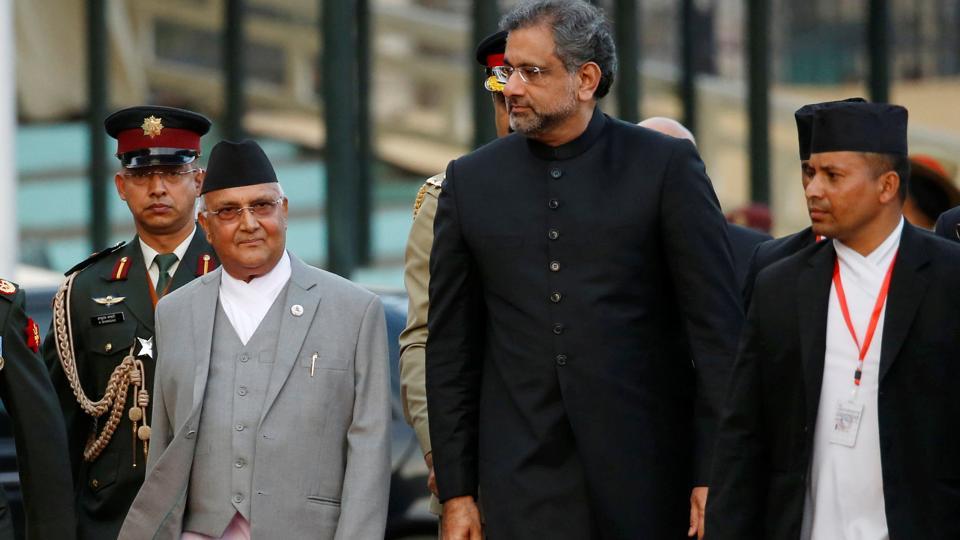
In his 2004 book Pakistan Islamisation, Army and Foreign Policy, Bidanda M Chengappa, Associate Professor of International Relations at Christ University in Bangalore, writes, “Pakistan’s foreign policy towards Nepal has evolved over the five decades, with India as an important factor in their ties… both the countries attempted to cultivate cordial relations with each other only in order to dilute India’s influence in South Asia.”
As Chengappa elaborates, there have been several instances since the 1960s when India has been an important factor in Nepal-Pakistan ties, and Nepal has always maintained a neutral and cautious approach to Indo-Pak conflicts. The most recent example concerns India’s revocation of the special status of India-administered Kashmir. Nepal initially refrained from issuing any statement. Later, Foreign Minister Pradeep Gyawali made a vague statement calling for resolution of the problem through dialogue. Nepal maintained a neutral position amid pressure from both India and Pakistan to side with them.
Since the establishment of diplomatic ties between Nepal and Pakistan on 19 March 1960, bilateral relations have neither progressed substantially, nor have they faced major setbacks. It was King Madhendra who took the initiative to establish diplomatic ties with Pakistan as part of his broader policy of diversification. In June 1959, Mian Ziauddin, then Pakistani High Commissioner to India, visited Kathmandu and had long discussions with King Mahendra and PM BP Koirala about establishing diplomatic relations. These talks bore fruit a year later.
In the initial phase, the Pakistani High commission to New Delhi was also accredited to oversee Kathmandu. During the Panchayat era, there were some high-level visits between Nepal and Pakistan. King Mahendra paid a visit to Pakistan in 1961 to seek Pakistani support for the Panchayat system, which Islamabad extended. Subsequently, Pakistani President Ayub Khan made an official visit to Nepal in 1963 and spent almost two weeks here.
Pakistan’s approach has always been to support Nepal on issues over which Nepal has difference with India. For example, when King Mahendra imposed the Panchayat system, India expressed its reservations over it whereas Pakistan fully backed it. Similarly, while India objected to King Birendra’s proposal to recognize Nepal as a ‘Zone of Peace’, Pakistani Prime Minister Zulfikar Ali Bhutto welcomed it. Bhutto had said, “We ourselves initiated certain proposals on the same lines and we welcome any proposal by a friendly country and a friendly sovereign like Birendra.”
Nepal, on its part, has always been cautious about its approach to Indo-Pak disputes. During the 1965 Indo-Pak war, Nepal faced a difficult situation. Pakistan complained that Nepali Gurkha soldiers were used against the Pakistan Army. “King Mahendra expressed his inability to intervene in the matter and the Nepalese foreign minister KN Bista even visited Pakistan in the post-conflict phase to personally explain the issue,” writes Chengappa. Similarly, Nepal has persistently maintained a neutral position on Kashmir.
However, there has been little progress on trade, investment and tourism between Nepal and Pakistan. After 1990, leaders of the two countries have met on the sidelines of various regional and global forums, but the frequency of high-level visits has gone down. Pakistani Prime Minister Shahid Khaqan Abbasi visited Nepal on 5-6 March 2018 after almost 15 years; before that Prime Minister Benazir Bhutto had visited Nepal in 1994.
There is some cooperation between the two armies. In May 2018, Nepal Army Chief Rajendra Chhetri called on the prime minister and defense minister of Pakistan, and discussed possible cooperation between the armies. Similarly, the Chairman of Joint Chiefs of Staff Committee of Pakistan Armed Forces General Zubair Mahmood Hayat visited Nepal in June.
The Pakistani government also provides scholarships for Nepali medical students.
Nepal exports black tea, woolen shawls, leather, hides and skins, optical lenses, herbal medicines, lentils and cardamom to Pakistan. Nepal’s imports from Pakistan include refined leather, machinery and parts, shoes and sandals, spices, poppy seeds and medicines. But overall trade is just $5 million. On average, around 3,000 Pakistani tourists visit Nepal every year.
In 1994, Pakistani Prime Minister Benazir Bhutto, on her visit to Nepal, had pledged support for joint ventures in the industrial, agricultural, technical, and technological fields. “We aim to increase our trade, which at present represents only a small fraction of the trade of Nepal and Pakistan with third countries,” she had said. There has been little progress so far.
Bangladesh: Alien a stone’s throw away
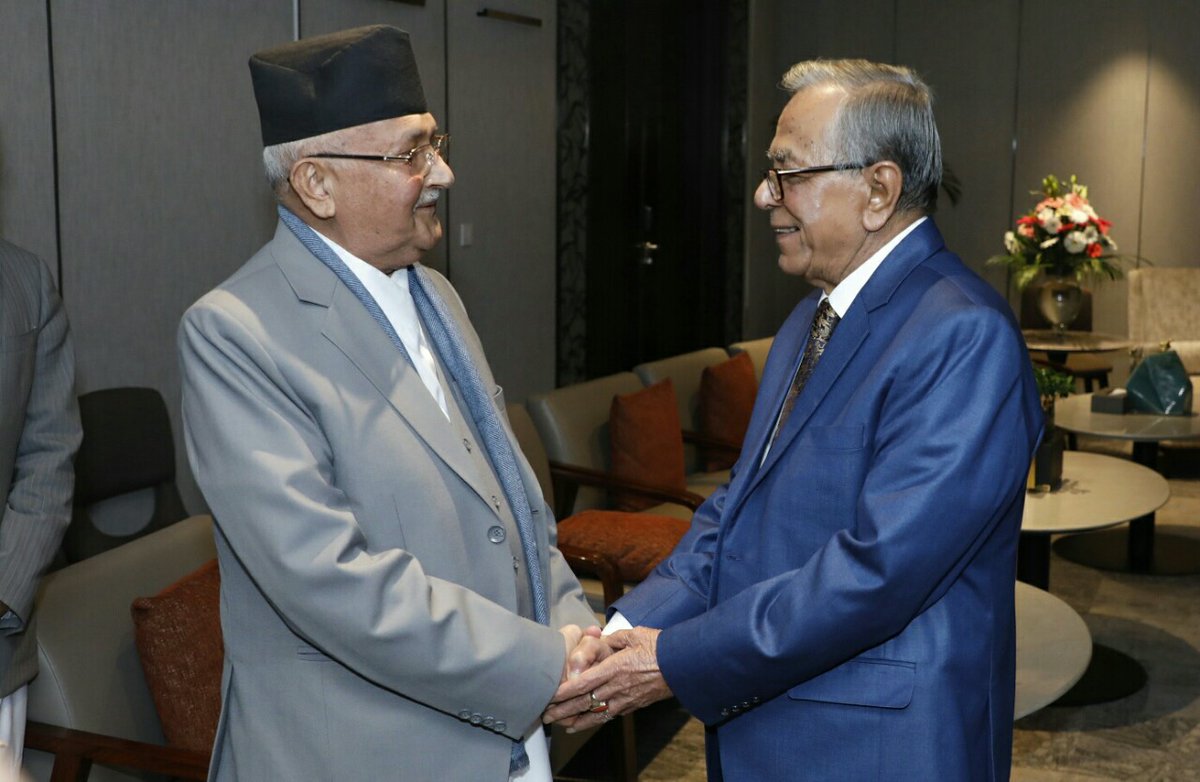
When Bangladesh was created after its split with Pakistan in 1971, Nepal was the seventh country to recognize the new Bangla state by establishing diplomatic relations on 8 April 1972. Following this, Pakistan had severed diplomatic relations with Nepal, but reestablished it later.
Five months after Nepal recognized Bangladesh, then Bangladeshi Foreign Minister Abdus Samad Azad came to Kathmandu, and his Nepali counterpart Gyanendra Bahadur Karki visited Dhaka the same year. In 1977, Bangladeshi President Ziaur Rahman came to Nepal, and King Birendra paid a state visit to Bangladesh in 1980. An example of close cooperation between the two countries in this period was the founding of the South Asian Association for Regional Cooperation (SAARC) in Dhaka in 1985. Nepal had strongly backed the formation of this regional grouping.
Soon after its creation, Bangladesh faced a huge food crisis and Nepal provided 15,000 tons of rice to it. In 1976, the two countries signed four memoranda of understanding (MoUs), covering trade, transit, civil aviation, and technical cooperation. They also agreed to collaborate on power generation and water resources. Although possible areas of cooperation were identified, little progress was made in subsequent years.
Nepal-Bangladesh relations have thus been characterized by high-level visits and discussions on potential areas of collaboration. Bilateral ties remain cordial but with little to show for it. Although Nepali and Bangladeshi leaders have met frequently on the margins of regional and multilateral summits, rarely have they made high-level visits to each other’s countries.
Bangladeshi President Abdul Hamid visited Nepal last month after a long gap, but there was no in-depth discussion on bilateral issues. Still, diplomats say, it could herald an era of more high-level visits, which could pave the way for greater engagement between the two countries.
A potential area of cooperation between Nepal and Bangladesh is hydropower. On 10 August 2018, they signed a much-awaited agreement for energy cooperation. Some Bangladeshi companies have shown interest in investing in Nepal’s hydropower. “Bangladesh is keen to buy electricity from Nepal in order to address its power shortage,” says former Nepali Ambassador to Bangladesh, Choplal Bhushal. “There has been some progress as well. We can either use the Indian power grid or construct a separate grid with India’s consent for the purpose.”
However, Sunil KC, Chief Executive of Asian Institute of Diplomacy and International Affairs in Kathmandu, has a different take. “Without signing a Bilateral Investment Promotion and Protect Act (BIPPA), we cannot bring much investment from Bangladesh,” he says.
Bangladesh and Nepal are separated by 27 kilometers of Indian land. Following the opening of Kakarvitta-Phulbari-Banglabandha transit route in 1997, Bangladesh has permitted Nepal to use the port in Mongla. Bangladesh has also provided an additional rail-transit corridor to Nepal via Rohanpur-Singhabad, but this too has not been adequately utilized. “We can fully utilize those transit facilities, which are nearer to us than Chinese ports. And the Bangladeshi government is ready to offer us more facilities,” says Bhushal.
Various studies have also been conducted on the possibility of railway connectivity between the two countries.
There are some hindrances to the import of Nepali products in Bangladesh. While Nepal readily imports Bangladeshi goods such as industrial raw materials, chemicals, fabrics and textile, jute products and electronic items, Bangladesh is blocking most of our products. Still, Nepal exports some amount of yellow lentils, oil cakes, large cardamom, wheat, vegetable seeds, handicrafts and pashminas to Bangladesh. Total bilateral trade today stands at some $10 billion. Given Bangladesh’s huge population, there is undoubtedly much scope to export a lot more to Bangladesh.
Then there are thousands of Nepali students who are studying in Bangladesh, particularly medicine, and the number is rising. Tourism is another potential area of cooperation. Yet the number of Bangladeshi tourists in Nepal has been declining. In January-October period this year, a total of 19,279 Bangladeshi tourists visited Nepal, a 1.9 percent decline from the previous year. Over 29,000 Bangladeshi tourists had visited Nepal in 2017.
As Nepal is preoccupied with big powers like India, China, and the US, the country has made little or no effort to enhance ties with smaller South Asian countries. Lack of homework on exploring areas of cooperation between Nepal and Bangladesh, for example, is a huge missed opportunity.















